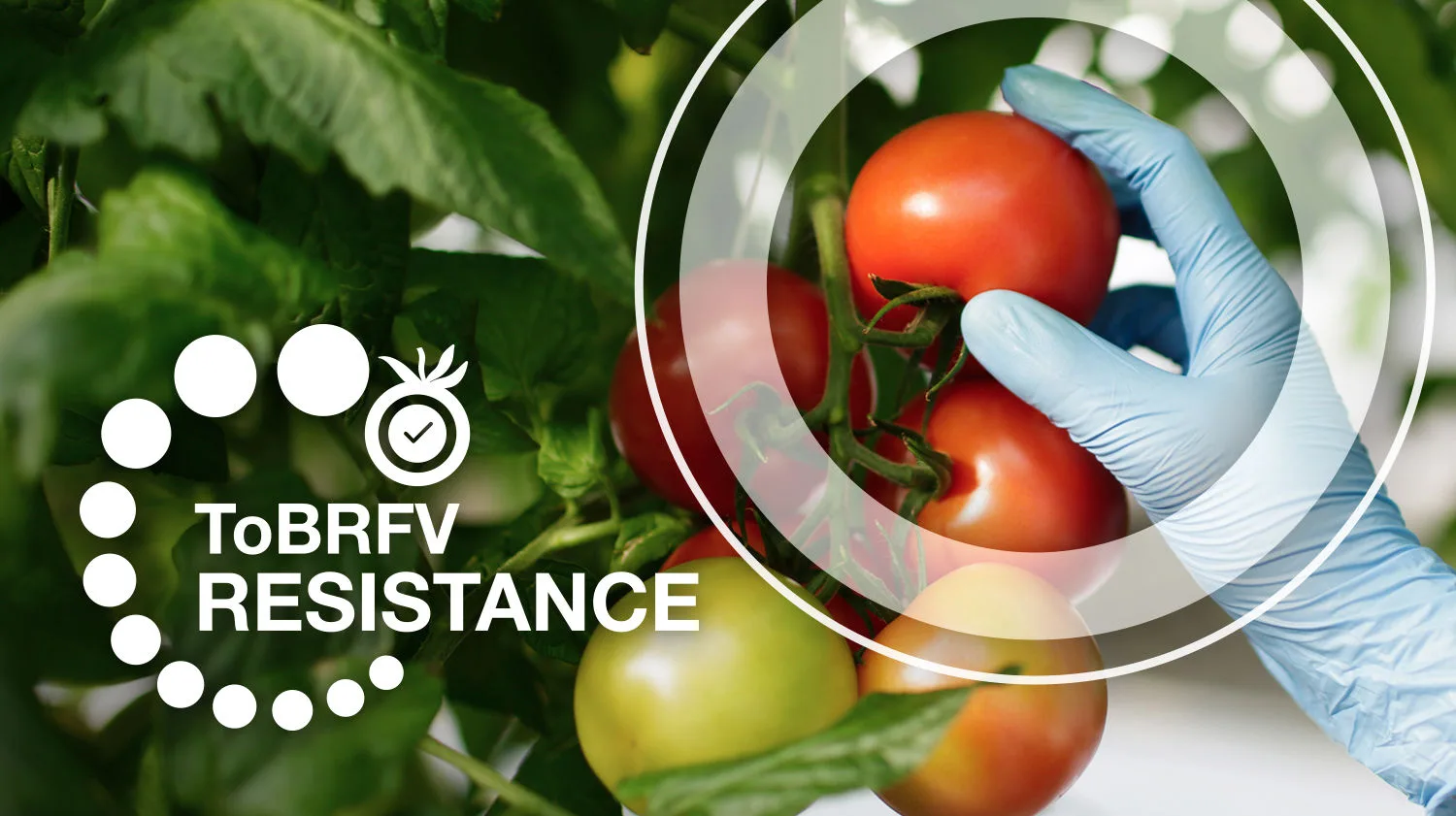Causal Agent
Insufficient nutrients
Distribution
Worldwide
Symptoms
The following symptoms are indicative of nutritional deficiencies. However, soil and foliar fertilizer analyses should be conducted to verify nutritional needs.
Nitrogen – The oldest leaves turn chlorotic and eventually senesce, while the younger leaves turn a yellowish-green. The plants may be stunted.
 Nitrogen deficiency: older leaves turn chlorotic then necrotic.
Nitrogen deficiency: older leaves turn chlorotic then necrotic.
Phosphorus – Leaves develop a dull green color and grow slowly. The underside of the leaves eventually turn a reddish-purple. Older leaves are affected first and may senesce in severe cases.
Potassium – The foliage will show a burning of the leaf margins. The older leaves may develop interveinal chlorosis while the veins remain green. The symptoms begin on the older leaves and progress to the younger ones as the disorder becomes increasingly more severe. Fruit disorders such as puffiness, gray wall and ripening diseases can result from a potassium deficiency.
 Potassium deficiency: yellow shoulder. (Courtesy of Gerald Brust, University of Maryland, Central Maryland Research and Education Center)
Potassium deficiency: yellow shoulder. (Courtesy of Gerald Brust, University of Maryland, Central Maryland Research and Education Center)
Calcium – interveinal chlorosis and leaf margin necrosis occur at the growing point, which eventually dies. The fruit develop blossom-end rot.
 Calcium deficiency: sidewall blossom-end rot. (Courtesy of Joshua Freeman, University of Florida, North Florida Research and Education Center)
Calcium deficiency: sidewall blossom-end rot. (Courtesy of Joshua Freeman, University of Florida, North Florida Research and Education Center)
Magnesium – Leaves develop interveinal chlorosis, starting on the older and progressing to the younger leaves. The midrib of the leaf remains green while the interveinal tissue becomes necrotic.
Sulfur – The older leaves turn light green, and the stems and petioles may turn purple and become spindly.
Boron – The older leaves turn yellow and brittle, and the growing point becomes necrotic and dies. The margins of older leaves and the leaf tips become necrotic. The fruit may also be affected and may develop scattered corky areas.
Copper – Initially, the younger leaves wilt and then may turn bluish-green and curl upwards. Severely affected plants are stunted and chlorotic.
Iron – The younger leaves develop interveinal chlorosis followed by a general yellowing. The midrib of the leaf usually remains green.
 Suspect iron deficiency: leaf yellowing. (Courtesy of Gerald Holmes, California State University, San Luis Obispo, Bugwood.org)
Suspect iron deficiency: leaf yellowing. (Courtesy of Gerald Holmes, California State University, San Luis Obispo, Bugwood.org)
Manganese – The younger leaves develop interveinal chlorosis followed by necrosis. while the midrib of the leaf remains green.
Molybdenum – The older leaves develop a yellowing and marginal necrosis that eventually progresses to the younger leaves. This deficiency is rare in tomato.
Zinc – The leaves become thickened and curl downward. Their petioles may become twisted and the older leaves exhibit an orange-brown chlorosis.
Conditions for Development
Nutrient deficiencies are most common in acid or alkaline soils due to the immobilization of nutrients at the lower and higher soil pH’s. Some soils are naturally low in specific nutrients due to their compositions. The excessive, or unbalanced. use of fertilizer may also cause some nutrients to be less available. Low temperatures, compaction or excessive soil moisture may also affect nutrient availability.
Control
Use a balanced fertilizer program. Soil and foliar nutrient analysis can give valuable information on nutritional deficiencies. Altering soil pH and using nutrient sprays can help correct some deficiencies.





